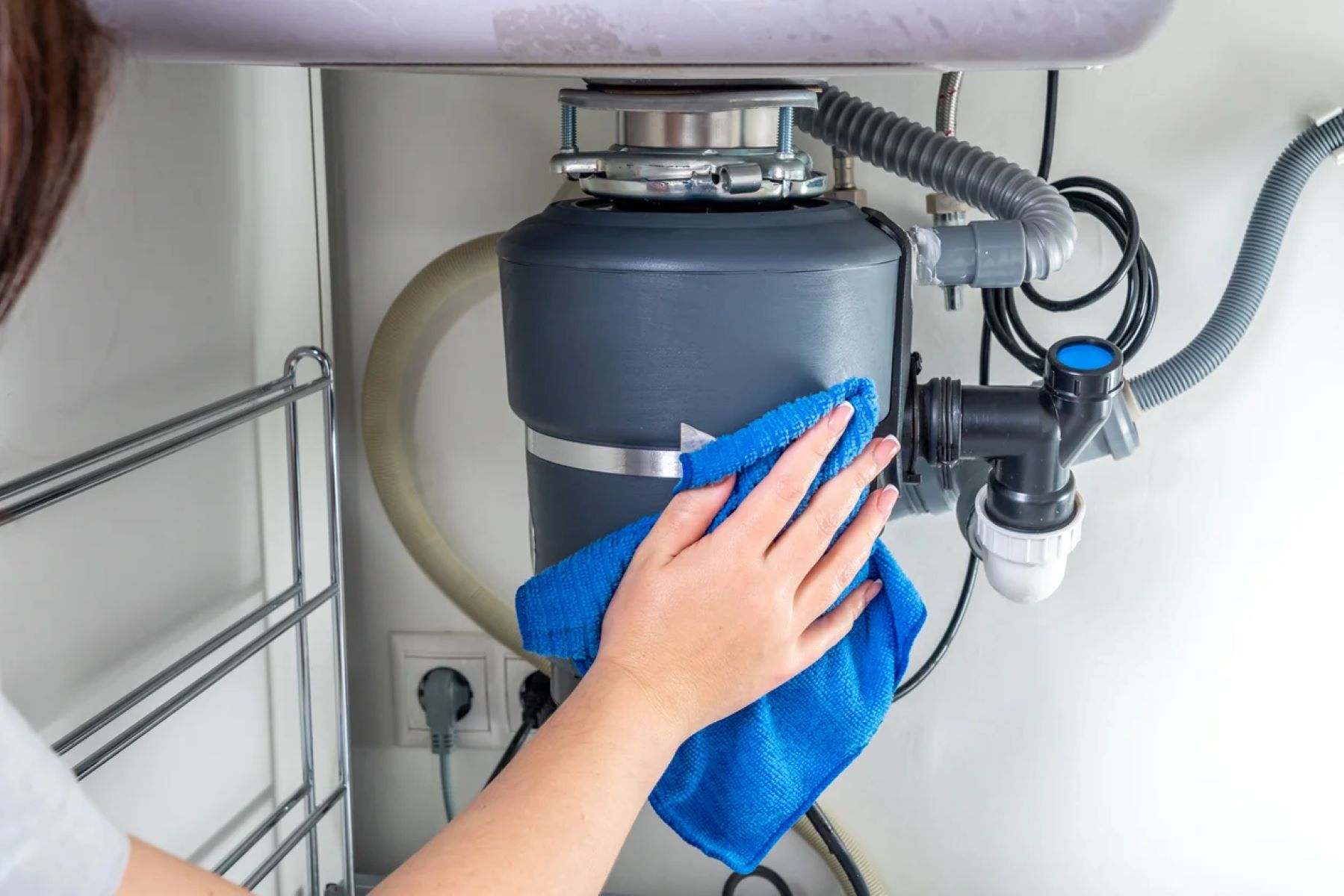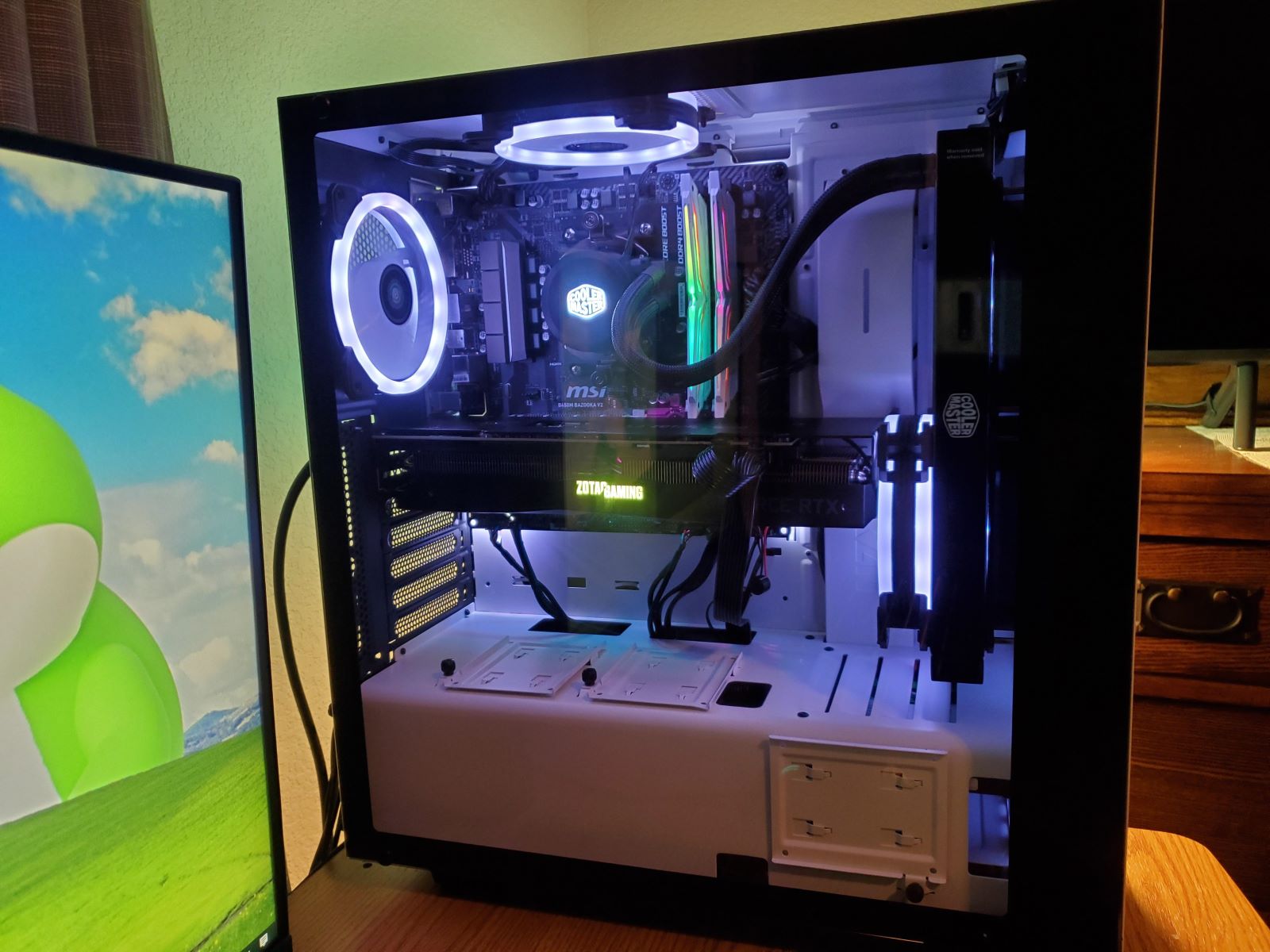Home>Home and Garden>The Shocking Reason Your Garbage Disposal Won’t Turn On!


Home and Garden
The Shocking Reason Your Garbage Disposal Won’t Turn On!
Published: January 21, 2024
Discover the surprising cause behind your malfunctioning garbage disposal! Get expert tips and solutions for your home and garden headaches.
(Many of the links in this article redirect to a specific reviewed product. Your purchase of these products through affiliate links helps to generate commission for Regretless.com, at no extra cost. Learn more)
Table of Contents
Introduction
Your garbage disposal is a modern convenience that you likely rely on daily, making kitchen cleanup a breeze. However, there are times when it unexpectedly fails to turn on, leaving you puzzled and frustrated. In such moments, understanding the potential reasons behind this issue can save you time, effort, and even repair costs. Whether you're a homeowner or a renter, knowing how to troubleshoot a malfunctioning garbage disposal can be invaluable.
When your garbage disposal refuses to spring to life, it's essential to remain calm and resist the urge to tinker with it immediately. Instead, take a moment to explore the possible causes and solutions, which can range from simple fixes to more complex issues. By gaining insight into the common culprits behind a non-functioning garbage disposal, you can make informed decisions on how to address the problem effectively.
In this article, we will delve into the various factors that may lead to your garbage disposal failing to turn on. From electrical malfunctions to mechanical issues, we'll explore the potential reasons behind this frustrating problem. Additionally, we'll discuss the significance of the reset button and the importance of seeking professional assistance when necessary.
By the end of this read, you'll be equipped with the knowledge to troubleshoot your garbage disposal and understand when it's time to call in the experts. So, let's unravel the mystery behind your malfunctioning garbage disposal and discover the steps to bring it back to life!
Common Causes of Garbage Disposal Failure
When your garbage disposal fails to turn on, several common causes could be at the root of the issue. Understanding these potential culprits can help you navigate the troubleshooting process effectively. Here are the most frequent reasons behind garbage disposal failure:
-
Electrical Problems: One of the primary reasons your garbage disposal may not turn on is an electrical issue. This could stem from a tripped circuit breaker, a blown fuse, or a loose electrical connection. Before delving further, it's crucial to ensure that the unit is receiving power. You can start by checking the circuit breaker and the power supply to the disposal.
-
Mechanical Obstruction: Another prevalent cause of garbage disposal failure is a mechanical obstruction within the unit. This can occur when foreign objects such as utensils, bones, or fibrous food waste become lodged in the disposal's grinding chamber, impeding its ability to function. Identifying and removing such obstructions is vital for restoring normal operation.
-
Worn Out Components: Over time, the components of your garbage disposal, such as the blades, motor, or bearings, may wear out due to regular use. This wear and tear can lead to reduced efficiency or complete failure of the unit. It's essential to be mindful of any unusual noises or sluggish performance, as these could indicate deteriorating components.
-
Lack of Maintenance: Inadequate maintenance can also contribute to garbage disposal failure. Neglecting to clean the unit regularly, allowing food residue to accumulate, or disregarding the manufacturer's maintenance guidelines can result in decreased performance and eventual malfunction.
-
Overloading: Attempting to process an excessive amount of food waste at once can overwhelm the garbage disposal, causing it to stall or fail. Overloading the unit puts undue strain on its components, potentially leading to motor burnout or other damage.
By familiarizing yourself with these common causes of garbage disposal failure, you can approach troubleshooting with a clearer understanding of what to look for. In the following sections, we'll delve deeper into specific issues such as electrical malfunctions, mechanical obstructions, and the reset button, providing insights into how to address each scenario effectively.
The Electrical Issue
When your garbage disposal fails to turn on, the first aspect to investigate is the electrical system. A malfunction in this area can be a common culprit for the unresponsiveness of your disposal unit. The following steps can help you troubleshoot and potentially resolve electrical issues:
-
Check the Power Supply: Begin by ensuring that the garbage disposal is receiving power. This can be done by checking the power switch to verify if it's turned on. If the switch is on and the disposal still doesn't function, proceed to the next step.
-
Inspect the Circuit Breaker: Head to your electrical panel and locate the circuit breaker corresponding to the garbage disposal. If the breaker has tripped, resetting it may restore power to the unit. However, if the breaker continues to trip after being reset, it indicates a potential electrical fault that requires further investigation by a professional electrician.
-
Examine the Power Cord and Outlet: If the circuit breaker is not the issue, inspect the power cord of the garbage disposal for any damage or fraying. Additionally, check the outlet to ensure it's functioning properly by plugging in another appliance. If the outlet is dead, the problem may be with the wiring or the outlet itself, necessitating the expertise of an electrician to resolve the issue.
-
Reset the Garbage Disposal: Many disposals are equipped with a reset button, typically located on the bottom or side of the unit. Pressing this reset button can often resolve minor electrical glitches, such as overloads or temporary malfunctions.
-
Consult a Professional: If the above steps do not restore power to your garbage disposal, it's advisable to seek the assistance of a qualified electrician. Attempting to diagnose or repair complex electrical issues without the necessary expertise can pose safety risks and may lead to further damage.
By systematically addressing the electrical components of your garbage disposal, you can potentially identify and resolve the underlying cause of the malfunction. However, if you encounter electrical complexities beyond your expertise, entrusting the matter to a professional ensures a safe and effective resolution.
Understanding the electrical intricacies of your garbage disposal equips you with the knowledge to troubleshoot and address issues that may arise, ultimately contributing to the efficient and reliable functionality of this essential kitchen appliance.
The Mechanical Issue
When your garbage disposal experiences a failure to turn on, a mechanical issue within the unit can often be the cause. Mechanical problems can manifest in various forms, from obstructions in the grinding chamber to wear and tear of essential components. Addressing these issues requires a systematic approach to ensure the restoration of your disposal's functionality.
Identifying Mechanical Obstructions
One of the most prevalent mechanical issues that can impede the operation of your garbage disposal is the presence of foreign objects or food waste obstruction within the grinding chamber. Items such as utensils, bones, fruit pits, or fibrous food scraps can become lodged in the disposal, hindering the movement of the impeller and grinding components.
To address potential mechanical obstructions:
-
Turn Off the Power: Before attempting to resolve any mechanical issues, it's crucial to turn off the power supply to the disposal unit. This can be done by unplugging it from the outlet or switching off the circuit breaker.
-
Inspect the Grinding Chamber: Using a flashlight, carefully examine the interior of the disposal's grinding chamber. Look for any foreign objects or food waste that may be obstructing the movement of the disposal's components.
-
Use Pliers or Tongs: If you identify any visible obstructions within the chamber, you can cautiously attempt to remove them using long-handled pliers or tongs. Exercise caution to avoid causing damage to the disposal or injuring yourself during this process.
-
Rotate the Impeller: After removing any visible obstructions, use a hex key or a garbage disposal wrench to manually rotate the impeller inside the disposal. This can help dislodge any remaining debris or food particles that may be hindering its movement.
Addressing Wear and Tear
Over time, the components of your garbage disposal, including the blades, motor, and bearings, can experience wear and tear due to regular usage. This wear and tear can lead to diminished performance or complete failure of the unit. Signs of mechanical wear and tear may include unusual grinding noises, sluggish operation, or visible damage to the disposal's components.
To address mechanical wear and tear:
-
Listen for Unusual Noises: Pay attention to any unusual grinding or scraping noises emanating from the disposal when it's in operation. These noises can indicate potential wear and tear on the blades or other components.
-
Inspect the Components: Visually inspect the disposal's components, including the blades and impeller, for signs of damage or deterioration. If you notice visible wear or damage, it may be indicative of the need for component replacement or professional servicing.
-
Schedule Maintenance: Regular maintenance, including cleaning and lubrication of the disposal's moving parts, can help mitigate the effects of wear and tear. Following the manufacturer's maintenance guidelines is essential for preserving the longevity of the disposal.
By carefully addressing potential mechanical issues within your garbage disposal, you can take proactive steps to restore its functionality and prevent further damage. Understanding the mechanical intricacies of your disposal empowers you to effectively troubleshoot and address issues, ensuring the reliable performance of this essential kitchen appliance.
The Reset Button
The reset button, also known as the overload protector, serves as a crucial safety feature on most garbage disposals. When the disposal becomes overloaded or encounters a temporary electrical malfunction, the reset button is designed to trip, cutting off power to the unit. This action prevents damage to the motor and other components, serving as a protective mechanism for the disposal.
Locating the reset button is the first step in troubleshooting a non-functioning garbage disposal. Typically, the reset button is positioned on the bottom or side of the disposal unit. Upon encountering a malfunction, pressing the reset button can often resolve minor electrical glitches, restoring power to the disposal.
To effectively utilize the reset button, follow these steps:
-
Identify the Reset Button: Locate the reset button on your garbage disposal. It is usually a small protruding button, often red or black, positioned on the bottom or side of the unit.
-
Press the Reset Button: After ensuring that the disposal is turned off, firmly press the reset button. This action resets the internal circuitry of the disposal, addressing minor electrical issues that may have caused the unit to stop functioning.
-
Restore Power and Test: Once the reset button has been pressed, restore power to the disposal by switching on the circuit breaker or plugging it back into the outlet. Test the disposal to see if it resumes normal operation.
If pressing the reset button resolves the issue and the disposal begins functioning as expected, it indicates that the problem was likely a temporary electrical glitch or an overload. However, if the disposal still fails to turn on after resetting, it may indicate a more complex issue that requires further investigation.
It's important to note that while the reset button can address minor electrical hiccups, persistent reliance on the reset button may signify underlying issues with the disposal's electrical system or motor. In such cases, seeking professional assistance is advisable to diagnose and rectify the root cause of the problem.
Understanding the function and proper utilization of the reset button empowers you to troubleshoot minor electrical issues with your garbage disposal effectively. By incorporating this knowledge into your maintenance routine, you can swiftly address temporary malfunctions and ensure the reliable performance of your disposal.
The Importance of Professional Help
While troubleshooting minor issues with your garbage disposal can often be managed independently, there are instances where seeking professional assistance becomes imperative. Understanding the limitations of DIY approaches and recognizing when to enlist the expertise of a professional can safeguard both your safety and the long-term functionality of your disposal unit.
Complex Electrical Faults
In the event of persistent electrical malfunctions, such as recurring tripped circuit breakers, damaged wiring, or unexplained power failures, it's crucial to engage a qualified electrician. Attempting to diagnose and rectify complex electrical issues without the requisite expertise can pose significant safety risks and may exacerbate the problem. Professional electricians possess the knowledge and tools to conduct thorough electrical assessments, identify underlying faults, and implement precise solutions, ensuring the safe and efficient operation of your garbage disposal.
Mechanical Repairs and Component Replacement
When faced with mechanical issues that extend beyond simple obstructions or routine maintenance, seeking the assistance of a professional is advisable. Damaged or worn-out components, including blades, motors, or bearings, may necessitate expert intervention to assess the extent of the damage and execute precise repairs or replacements. Professional technicians possess the specialized skills and equipment required to disassemble, diagnose, and restore the mechanical integrity of your garbage disposal, mitigating the risk of further damage and ensuring optimal performance.
Safety and Compliance
Engaging professional help for garbage disposal repairs and maintenance aligns with safety protocols and regulatory compliance. Professional technicians are well-versed in industry standards and safety guidelines, ensuring that all repair and maintenance work adheres to established protocols. By entrusting the care of your disposal to qualified professionals, you mitigate the risk of injury, electrical hazards, and non-compliance with safety regulations, fostering a secure and compliant environment in your kitchen.
Long-Term Reliability
Professional interventions not only address immediate issues but also contribute to the long-term reliability of your garbage disposal. Expert assessments, repairs, and maintenance initiatives are geared towards enhancing the durability and efficiency of the unit, prolonging its lifespan and minimizing the likelihood of recurrent failures. By investing in professional assistance, you prioritize the sustained functionality of your garbage disposal, reaping the benefits of a dependable and efficient kitchen appliance.
In summary, recognizing the importance of professional help in addressing complex electrical faults, executing mechanical repairs, ensuring safety and compliance, and enhancing long-term reliability underscores the value of expert interventions. By leveraging the expertise of qualified professionals, you can navigate challenging disposal issues with confidence, safeguarding the performance and safety of this essential kitchen appliance.
Conclusion
In conclusion, the frustration of a non-functioning garbage disposal can be alleviated by understanding the common causes behind its failure to turn on. From electrical malfunctions to mechanical obstructions, the troubleshooting process involves a systematic approach to identify and address the underlying issues effectively. By delving into the intricacies of the reset button and recognizing the significance of professional assistance, homeowners and renters can navigate the challenges of garbage disposal malfunctions with confidence and informed decision-making.
Understanding the electrical intricacies of a garbage disposal is paramount in troubleshooting issues related to power supply, circuit breakers, and the reset button. By systematically inspecting the power supply, checking the circuit breaker, and utilizing the reset button, individuals can address minor electrical glitches and restore the functionality of the disposal. However, recognizing the limitations of DIY approaches and seeking professional help for complex electrical faults is crucial to ensure safety and compliance while fostering long-term reliability.
Mechanical issues, such as obstructions within the grinding chamber and wear and tear of components, require careful examination and proactive maintenance. By identifying and addressing mechanical obstructions, homeowners can prevent damage to the disposal and restore its operational efficiency. Additionally, being mindful of signs of wear and tear, scheduling regular maintenance, and engaging professional assistance for complex mechanical repairs contribute to the sustained functionality and longevity of the disposal unit.
The reset button serves as a valuable tool in addressing temporary electrical malfunctions, providing a means to reset the internal circuitry of the disposal. By understanding the function and proper utilization of the reset button, individuals can swiftly address minor electrical hiccups, ensuring the reliable performance of the disposal. However, persistent reliance on the reset button may indicate underlying issues that necessitate professional assessment and intervention.
Recognizing the importance of professional help in addressing complex electrical faults, executing mechanical repairs, ensuring safety and compliance, and enhancing long-term reliability underscores the value of expert interventions. By leveraging the expertise of qualified professionals, homeowners and renters can navigate challenging disposal issues with confidence, safeguarding the performance and safety of this essential kitchen appliance.
In essence, by gaining insight into the intricacies of garbage disposal functionality and maintenance, individuals can effectively troubleshoot issues, make informed decisions, and prioritize the safety and reliability of this indispensable kitchen appliance.













